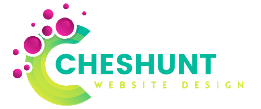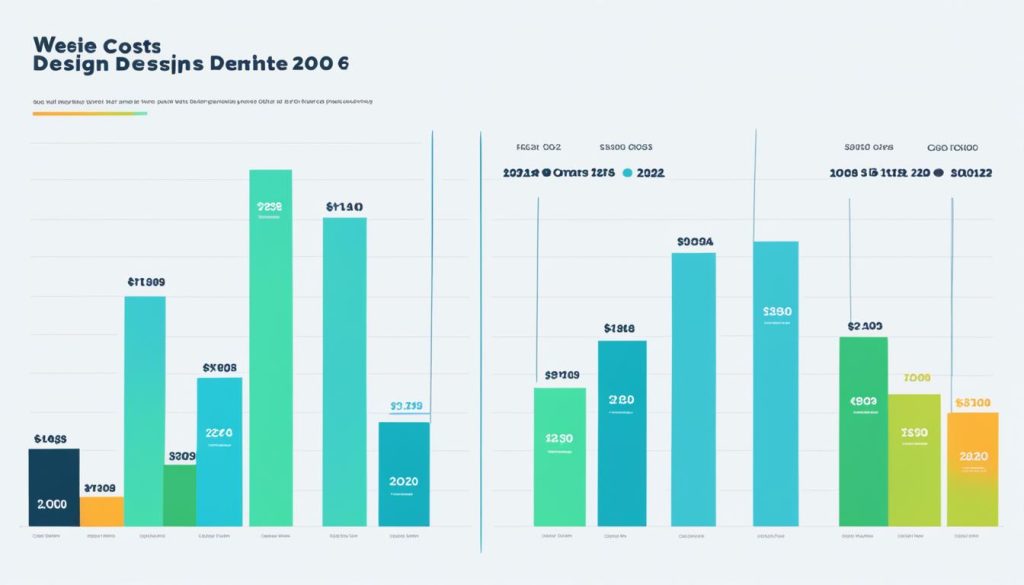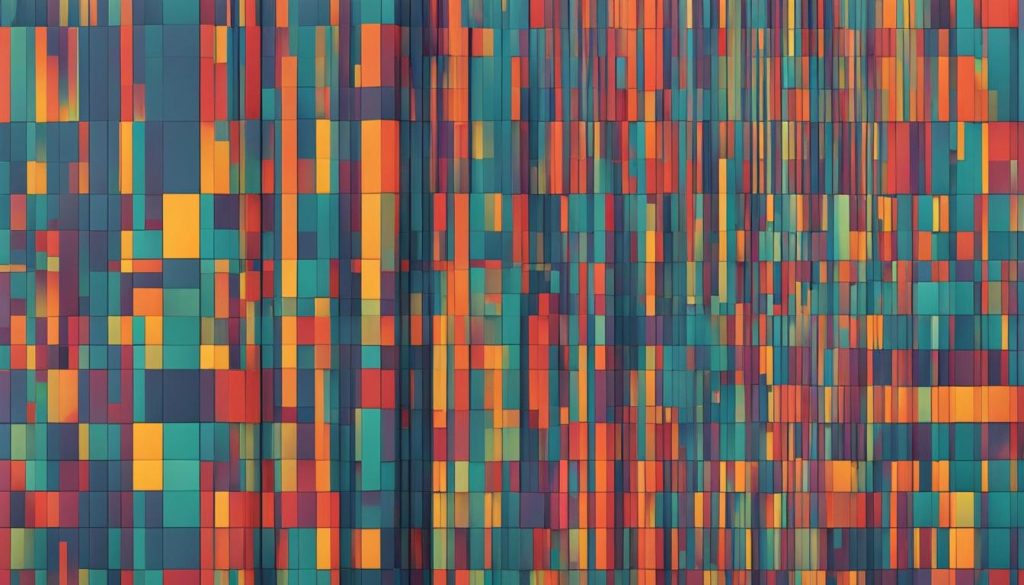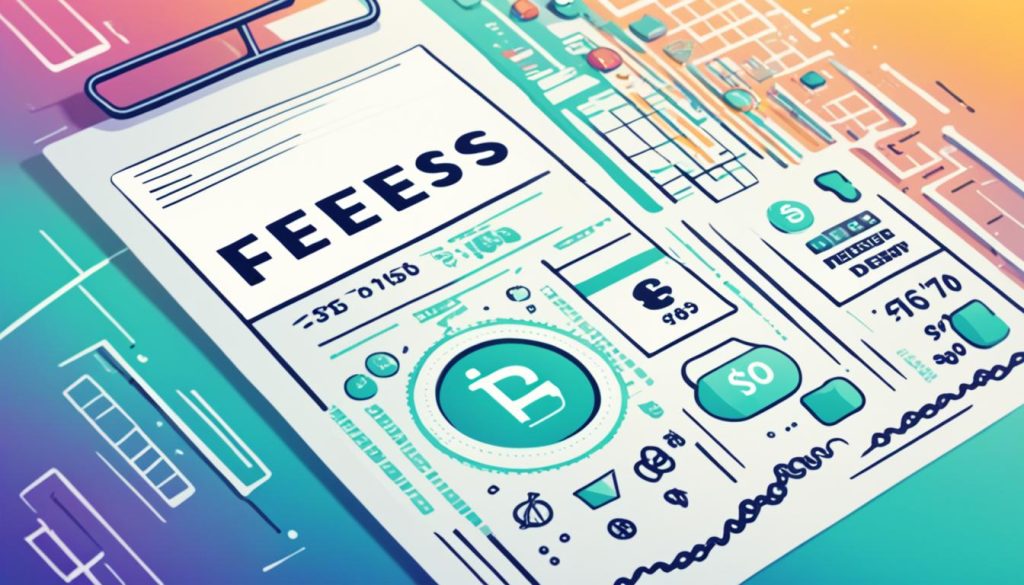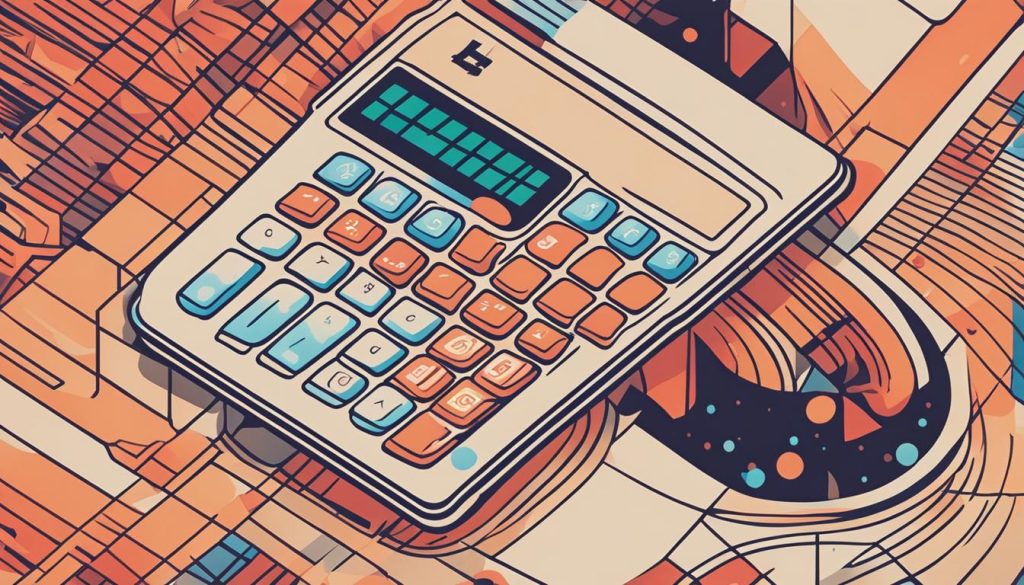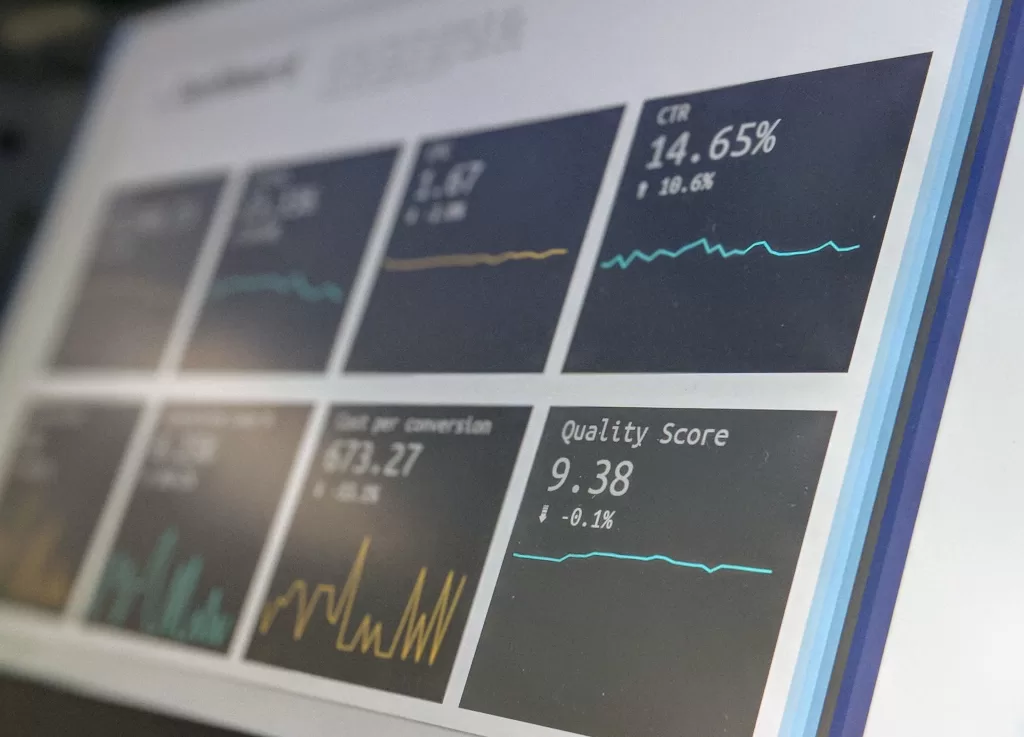In today’s digital age, having a well-designed website is crucial for businesses and individuals alike. However, the cost of hiring a web designer can vary greatly depending on several factors. Whether you’re a small business owner or an individual looking to create a personal website, understanding the expenses involved in paying someone to design a website is essential for budgeting and making informed decisions.
In this article, we will explore the different components that influence the cost of hiring a web designer in 2024. We will delve into the various factors that contribute to website design costs, including the type of website, its complexity, and the price ranges associated with each type. By gaining insight into these factors, you will have a better understanding of the potential expenses involved in paying someone to design a website tailored to your needs.
Key Takeaways:
- The cost of hiring a web designer in 2024 can vary depending on factors such as the type of website and its complexity.
- Understanding the different components that contribute to website design costs is crucial for budgeting purposes.
- Websites can range from basic designs to complex e-commerce platforms, and the price ranges differ accordingly.
- Additional factors such as customizations, functionality requirements, and the use of templates can impact the overall cost.
- Comparing the rates of freelance web designers and web design agencies can help you make an informed decision based on your budget and requirements.
Understanding Website Design Costs in 2024
In this section, we will provide a comprehensive understanding of website design costs in 2024. We will discuss the various factors that influence web design prices, such as the complexity of the website, the type of website being created, and the specific requirements of the project. By gaining insight into these factors, you will be able to make informed decisions when it comes to budgeting for website design services.
The Various Factors Influencing Web Design Prices
When it comes to determining the cost of hiring a web designer, several factors come into play. These factors can significantly impact the overall pricing of website design services. Some of the key factors that influence web design prices include:
- Website complexity: The complexity of a website, such as the number of pages, customizations, and functionalities, can affect the cost of hiring a web designer.
- Type of website: Different website types, ranging from basic informational sites to e-commerce platforms, can have varying price ranges.
- Specific requirements: Additional requirements such as responsive design, content management systems, and integrations with third-party tools can impact pricing.
- Experience and expertise of the web designer: Highly skilled and experienced web designers may charge higher fees for their services compared to less experienced designers.
Price Ranges for Different Website Types: From Basic to E-Commerce
The cost of hiring a web designer can vary depending on the type of website you need. Here is a breakdown of the general price ranges for different website types:
| Website Type | Price Range |
|---|---|
| Basic informational website | £500 – £2,000 |
| Small business website | £2,000 – £5,000 |
| E-commerce website | £5,000 – £15,000+ |
These price ranges are general estimates and can vary depending on the complexity and specific requirements of your project.
Impact of Website Complexity on Development Pricing
The complexity of a website plays a significant role in determining its development pricing. As the complexity increases, the time and effort required to design and develop the website also increase, resulting in higher costs. Factors that contribute to the complexity of a website include:
- Number of pages: The more pages a website requires, the more time and effort it takes to design and develop.
- Functionality requirements: Custom functionality, integrations, and interactive elements can add to the complexity of a website.
- Customizations: Extensive design customizations and unique features can increase the complexity of the project.
It’s important to consider the impact of website complexity when budgeting for web design services, as it can significantly affect the overall cost of hiring a web designer.
Having a clear understanding of the factors influencing web design prices and the impact of website complexity on development pricing will help you make informed decisions when it comes to budgeting for website design services in 2024.
Options for Website Creation: DIY vs Professional Design
When it comes to website creation, individuals and businesses have the option to either design the website themselves or hire a professional. Both options have their merits and considerations, and understanding the pros and cons of each can help you make an informed decision based on your specific needs and budget.
DIY Website Creation:
If you have a limited budget or possess the necessary skills, designing your website yourself can be an attractive option. Here are some advantages of the DIY approach:
- Cost-saving: DIY website creation eliminates the need to pay someone for their design services, reducing upfront expenses.
- Control and flexibility: By designing the website yourself, you have full control over the creative direction and can make changes whenever you want.
- Learning opportunity: Designing your own website allows you to gain valuable skills and knowledge that can be beneficial in the long term.
However, it’s important to consider the potential downsides of DIY website creation:
- Time-consuming: Designing a website from scratch can be time-consuming, especially if you’re new to web design.
- Limited expertise: Unless you have extensive knowledge of web design principles, your website may lack the professional polish and functionality of a site designed by a professional.
- Technical challenges: Building a website involves technical aspects such as coding and troubleshooting, which can be daunting if you’re not familiar with these processes.
Professional Design:
On the other hand, hiring a professional web designer offers numerous advantages:
- Expertise and quality: Professional web designers have the knowledge and experience to create visually appealing, functional websites that align with industry best practices.
- Time-saving: By entrusting the design process to a professional, you can focus on other aspects of your business while ensuring the website is in capable hands.
- Customization and branding: A web designer can help you create a unique website that reflects your brand identity and sets you apart from competitors.
- Technical support: Professionals can provide ongoing technical support, ensuring that your website is always up-to-date and functioning properly.
However, it’s important to consider the potential drawbacks of hiring a professional:
- Cost: Hiring a web designer involves expenses, including design fees, maintenance costs, and potential additional charges for customization or updates.
- Dependency: Relying on a professional for website updates and modifications may mean waiting for their availability and incurring additional fees.
In conclusion, the choice between DIY website creation and professional design ultimately depends on your budget, skills, and the level of customization and professionalism you desire. If you have the time, resources, and expertise, DIY website creation can be a cost-effective option. However, if you value expertise, customization, and a professional touch, hiring a web designer is the way to go. Consider your unique needs and priorities to make an informed decision that aligns with your goals.
Breaking Down the Components of Website Design Quotations
In order to fully understand the cost of hiring a web designer, it’s important to break down the components of website design quotations. These components encompass various elements that contribute to the overall cost of the website design process. By examining these components, you can gain insight into the pricing structure and make informed decisions when hiring a web designer.
Domain Name and Hosting: The Foundation of Website Costs
The first component of website design quotations is the domain name and hosting. The domain name is the unique web address that users will use to access your website, while hosting refers to the server space where your website’s files are stored. These elements are the foundation of your website and are essential for its functionality. The cost of the domain name and hosting can vary depending on the provider and the specific requirements of your website.
SSL Certificate and Security Essentials
Website security is crucial in today’s digital landscape. The next component of website design quotations is the SSL certificate and security essentials. An SSL certificate ensures that data transmitted between your website and your users is secure and encrypted. It provides authentication and builds trust with your visitors. Security essentials include measures such as firewalls, malware protection, and regular security updates. These components are vital for safeguarding your website and protecting your users’ information. The cost of an SSL certificate and security essentials can vary depending on the level of security required and the provider.
Cost Variables: Templates, Custom Design, and Functionality Add-ons
The final component of website design quotations involves cost variables such as templates, custom design, and functionality add-ons. Templates are pre-designed website layouts that can be customized to suit your branding and content. They offer a cost-effective solution and are often quicker to implement. On the other hand, custom design involves creating a unique website tailored specifically to your needs, providing more flexibility and originality, but usually at a higher cost. Additionally, functionality add-ons, such as e-commerce integrations or membership systems, can enhance the user experience but will add to the overall cost of the website.
It’s important to carefully weigh the pros and cons of each cost variable and determine which option best suits your budget and objectives.
By breaking down the components of website design quotations, including the domain name and hosting, SSL certificate and security essentials, as well as cost variables like templates, custom design, and functionality add-ons, you can gain a comprehensive understanding of the pricing structure and make informed decisions when hiring a web designer.
| Component | Description |
|---|---|
| Domain Name and Hosting | The foundation of a website, including the unique web address and server space. |
| SSL Certificate and Security Essentials | Ensuring website security and protecting user data through encryption and security measures. |
| Cost Variables | Options such as templates, custom design, and functionality add-ons that impact the overall cost. |
How much does it cost to pay someone to design a website?
In this section, we will explore the rates of freelance web designers in 2024. Freelancers offer website design services at varying price points, and understanding these rates can help you determine the potential costs of hiring a freelance web designer for your project.
Freelance Web Designer Rates in 2024
When it comes to hiring a freelance web designer, the rates can vary based on several factors. These include the designer’s experience, expertise, and the complexity of the project. On average, freelance web designers in 2024 charge between £40 to £100 per hour. However, it’s important to note that rates may vary depending on the specific requirements of your website and the designer’s skill level.
Freelance web designers often provide transparent pricing structures, providing you with a breakdown of costs based on the scope of work. This can help you assess the feasibility of hiring a freelancer within your budget.
Agency Web Design Fees Versus Individual Designers
While freelance web designers offer flexibility and cost-effectiveness, web design agencies provide a comprehensive package of services. Web design agencies typically have a team of designers, developers, and other professionals who work together to deliver high-quality websites.
Web design agencies often have a higher price range compared to freelance web designers. On average, web design agencies charge between £3,000 to £10,000 for a standard website. The cost can vary based on the complexity of the project and the reputation of the agency.
When deciding between hiring an agency or an individual designer, consider factors such as your budget, project requirements, and the level of expertise needed. Freelancers may be more suitable for smaller projects with limited budgets, while agencies may be a better fit for larger-scale projects that require a multidisciplinary team.
Navigating Hidden Costs and Understanding Final Quotes
When paying someone to design a website, it’s essential to have a clear understanding of the final costs involved. While freelance web designers and agencies may provide initial quotes, it’s important to be aware of hidden costs that can arise during the website design process.
Some common hidden costs to keep in mind include additional design revisions, content creation, stock image fees, ongoing maintenance, and hosting fees. By discussing these potential costs upfront and clarifying what is included in the initial quote, you can avoid any unexpected expenses or budgetary surprises.
When reviewing final quotes, take the time to carefully analyze the breakdown of costs, ensuring that there are no hidden fees or ambiguous charges. Asking for clarification on any unclear points will help you make an informed decision and avoid any misunderstandings.
“Understanding the rates of freelance web designers and comparing them to web design agency fees can help you make an informed decision about your website design budget.” – John Smith, Web Design Expert
Maximising Your Investment in Professional Web Design
Investing in professional web design comes with long-term benefits for your business or brand. A well-designed website not only enhances your online presence but also drives organic traffic, improves user experience, and increases conversion rates. By understanding the long-term advantages of quality web design, you can appreciate the value it brings to your digital strategy.
Long-Term Benefits of Quality Web Design
Quality web design provides several long-term benefits that contribute to the success of your online presence:
- Improved User Experience: A well-designed website ensures that visitors can easily navigate and find the information they need. The intuitive interface, clear navigation, and responsive design create a positive user experience, which keeps users engaged and encourages them to return.
- Better Search Engine Rankings: Search engines favor websites with excellent user experiences. When your website is designed with user-friendly features and meets search engine optimization (SEO) best practices, it is more likely to rank higher in search engine results, driving more organic traffic to your site.
- Enhanced Brand Image and Credibility: A professionally designed website exudes trust and credibility. It reinforces your brand image, showcases your expertise, and helps establish your business as a reputable entity in the industry.
- Increased Conversion Rates: A well-designed website focuses on user engagement and conversions. By incorporating effective call-to-actions, compelling visuals, and clear messaging, your website can convert more visitors into paying customers.
Strategies to Balance Cost and Value in Web Design
When it comes to web design, it’s crucial to balance cost and value to maximize your investment. Consider the following strategies:
- Define Your Goals and Budget: Clearly define your website’s goals and allocate a budget that aligns with your business objectives. This will help you prioritize your design requirements and make informed decisions about where to invest your resources.
- Choose the Right Web Designer: Research and choose a professional web designer who understands your industry and has a proven track record. While cost is a factor, consider the designer’s expertise, portfolio, and customer reviews to ensure you’re getting the best value for your investment.
- Focus on Essential Features: Prioritize essential website features that align with your goals and target audience. By focusing on the core functionalities, you can keep costs in check without compromising on quality.
- Consider Scalability: Plan ahead for the future by designing a website that can accommodate future growth and scalability. This ensures that your investment in web design can support your business’s long-term goals without requiring a complete redesign in the near future.
By implementing these strategies, you can make cost-effective decisions that balance your budget while maximizing the value of your web design investment.
Aligning Web Design with Your Digital Marketing Objectives
Web design should align seamlessly with your digital marketing objectives to maximize its effectiveness. Consider the following steps:
- Define Your Marketing Goals: Clearly define your digital marketing objectives, such as increasing brand awareness, generating leads, or driving online sales. These goals will inform the design elements needed to achieve them.
- Consistent Branding: Ensure your web design reflects your brand’s visual identity, including color schemes, typography, and brand elements. Consistency across all marketing channels establishes brand recognition and reinforces your messaging.
- User Journey and Conversion Funnels: Map out the user journey on your website and create conversion funnels that guide users towards desired actions. Intuitive navigation, clear call-to-actions, and strategic placement of content contribute to a seamless user experience that supports your digital marketing objectives.
- Integration of Analytics and Tracking: Implement analytics tools to measure the performance of your website and track key metrics such as traffic, conversions, and user behavior. This data-driven approach allows you to optimize your web design based on real-time insights.
By aligning your web design with your digital marketing objectives, you can create a powerful online presence that effectively meets your business goals.
| Web Design Cost Factors | Considerations |
|---|---|
| Complexity of Design | The more intricate and customized the design, the higher the cost. |
| Number of Pages | Each additional page adds to the overall design and development effort. |
| Functionality Requirements | The integration of advanced features and functionalities may increase costs. |
| Content Management System (CMS) | Different CMS platforms have varying costs associated with licensing and customization. |
| E-commerce Capabilities | If your website involves online selling, e-commerce functionalities will impact the overall cost. |
Conclusion
In conclusion, the cost of paying someone to design a website in 2024 can vary based on several factors. The type of website, its complexity, and the specific requirements of the project all contribute to the overall cost. By carefully considering these factors, you can make informed decisions about your website design budget.
It is important to understand the pricing structures of different web designers and the range of services they offer. Freelance web designers and web design agencies may have different fee structures, so it’s essential to compare and assess your options. Additionally, balancing cost and value is crucial to ensure you get the most out of your investment in professional web design.
Furthermore, aligning your web design with your digital marketing objectives is essential for creating an effective online presence. By integrating your website design with your marketing strategy, you can optimize the return on your investment and achieve your business goals.
Remember, when considering the cost of paying someone to design a website, it’s not just about the upfront expenses. It’s also about the long-term benefits, the quality of the design, and the impact it will have on your brand or business. By carefully evaluating all these factors, you can make an informed decision and create a website that meets your needs and exceeds your expectations.
FAQ
How much does it cost to pay someone to design a website in 2024?
The cost of hiring a web designer in 2024 varies depending on factors such as the type of website, its complexity, and specific project requirements. Website design costs can range from a few hundred to several thousand pounds.
What are the various factors that influence web design prices?
Web design prices are influenced by factors such as the complexity of the website, the type of website being created (e.g., basic or e-commerce), and the specific project requirements.
What are the price ranges for different website types?
The price ranges for different website types vary. Basic websites typically have lower costs, while e-commerce platforms and more complex websites can have higher price ranges.
How does website complexity impact development pricing?
The complexity of a website, including the number of pages, functionality requirements, and customizations, can impact development pricing. More complex websites generally require more time and resources, resulting in higher costs.
Should I design the website myself or hire a professional?
The decision to design the website yourself (DIY) or hire a professional depends on factors such as your technical skills, time availability, and the level of design expertise required. DIY options may have lower costs, but professional design ensures quality and optimal functionality.
What components are included in website design quotations?
Website design quotations include components such as domain name and hosting costs, SSL certificates and security essentials, as well as factors related to templates, custom design, and functionality add-ons.
How do SSL certificates and security essentials impact website design costs?
SSL certificates and security essentials add to the overall costs of website design due to their importance in ensuring a secure online environment. These components help protect sensitive data and build trust with users.
How do templates, custom design, and functionality add-ons contribute to website design costs?
The choice between using templates or opting for custom design, as well as incorporating additional functionality add-ons, can impact website design costs. Custom design and advanced functionality generally involve higher costs compared to using pre-designed templates.
What are the rates of freelance web designers in 2024?
Freelance web designers’ rates in 2024 can vary depending on factors such as their experience, expertise, and the complexity of the project. Rates can range from a few hundred to several thousand pounds.
How do web design agency fees compare to individual freelance web designers?
Web design agencies usually have higher fees compared to individual freelance web designers. The higher fees for agencies often reflect additional services, resources, and expertise that they provide.
What are some common hidden costs in website design, and how can I understand and negotiate final quotes?
Common hidden costs in website design can include additional revisions, content creation, or ongoing maintenance fees. To understand and negotiate final quotes, it is important to have a clear scope of work, communicate your requirements, and ask for detailed breakdowns of costs.
What are the long-term benefits of investing in professional web design?
Investing in professional web design can lead to long-term benefits such as improved user experience, increased credibility, higher search engine rankings, and better conversion rates. A well-designed website can positively impact your online presence and business success.
How can I balance cost and value in web design?
Balancing cost and value in web design involves considering factors such as your budget, the specific needs of your website, and the return on investment. By maximizing the value derived from web design services while staying within your budget constraints, you can achieve an effective balance.
How important is aligning web design with digital marketing objectives?
Aligning web design with your digital marketing objectives is crucial as it ensures consistency and synergy across your online presence. An aligned website design supports your marketing efforts and helps you achieve your desired business goals.
